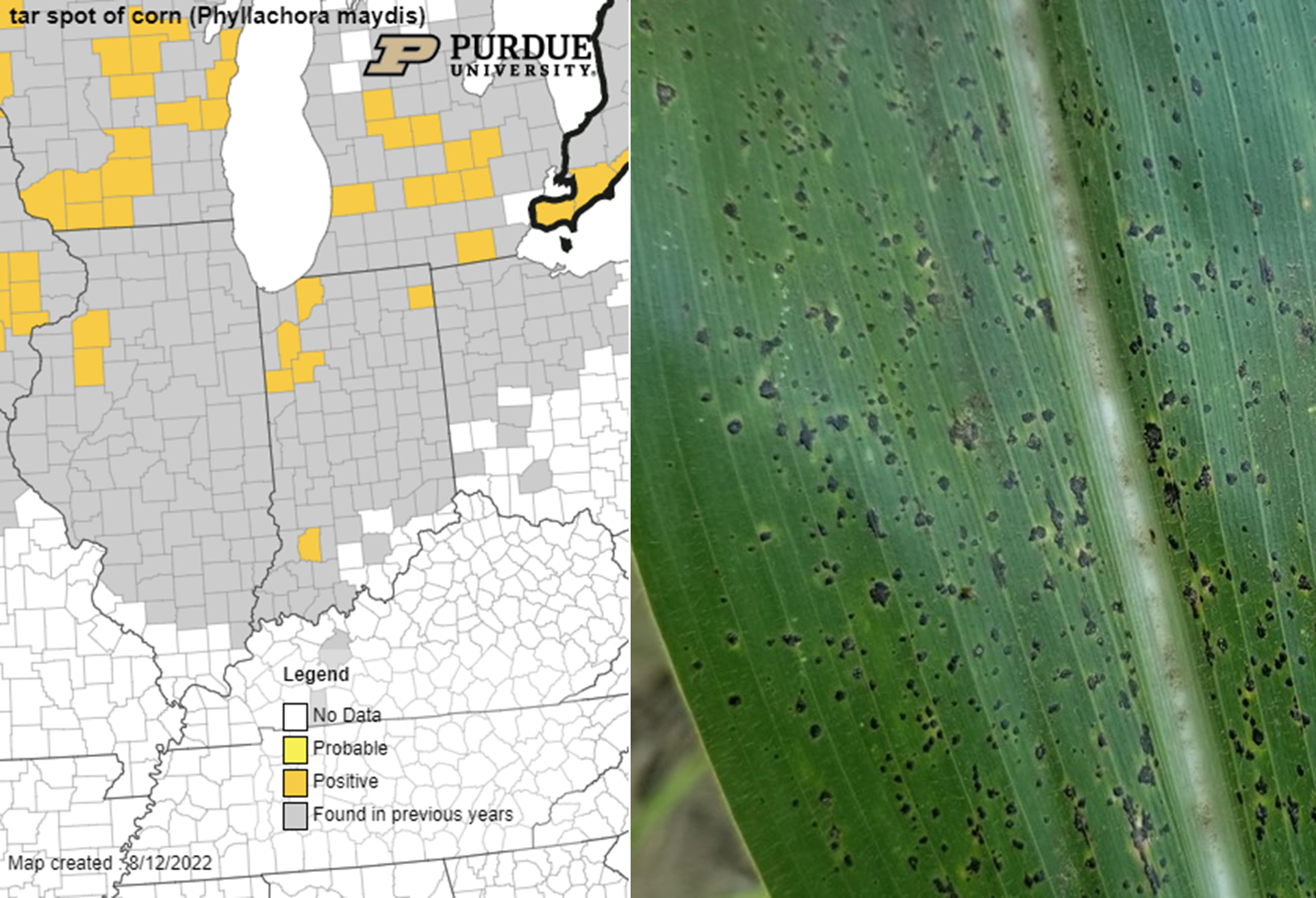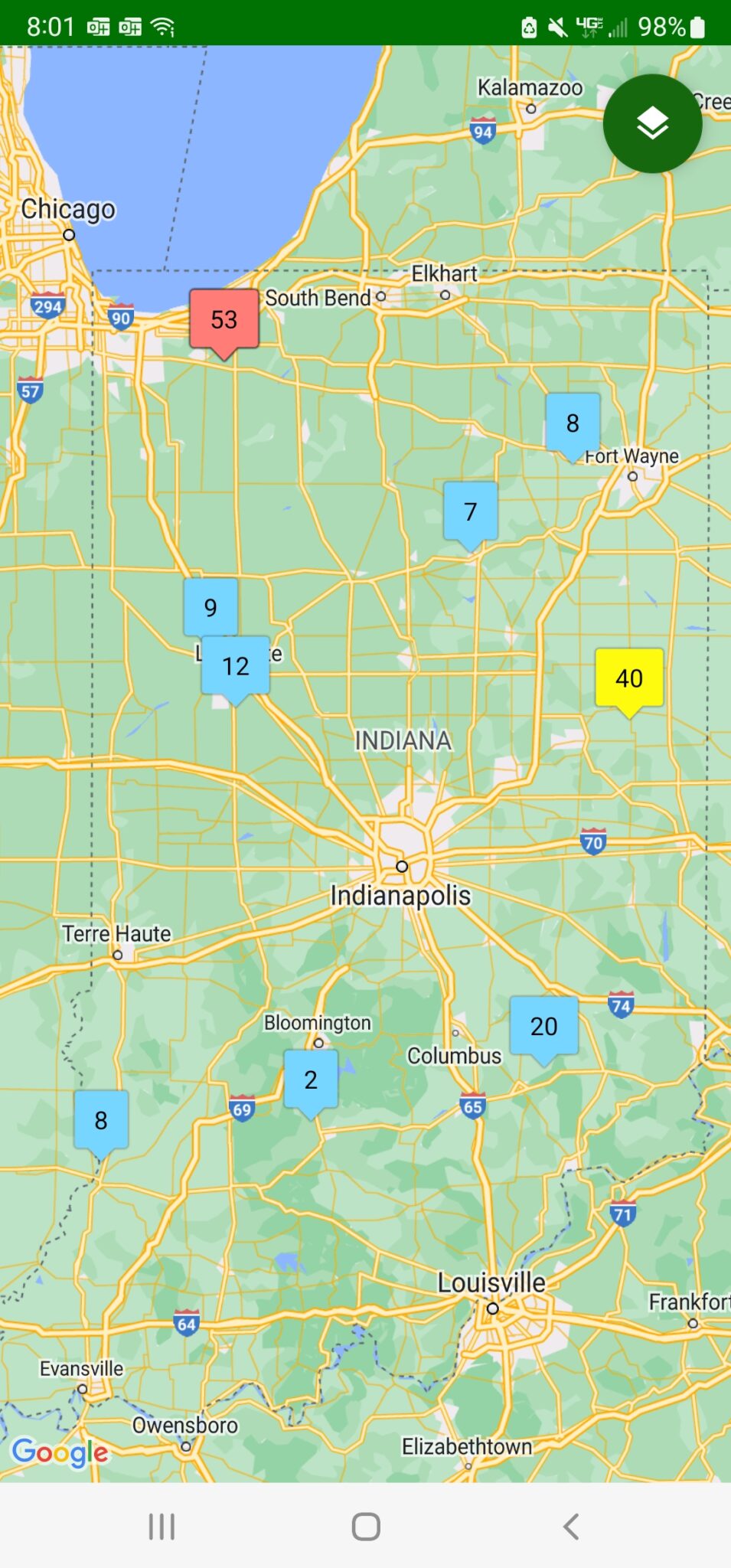Tar spot continues to be found in Indiana and our first confirmation of southern corn rust happened this week (Figures 1 and 2). I suggest if you have not gotten out and looked for these diseases now is the time. Even if your corn is approaching black layer it will be important to document tar spot in your fields for the future disease management decisions.
There are currently 6 counties with a positive confirmation of tar spot (Figure 1). One county (Jennings) with southern rust (Figure 2). As we are learning this season where there have been favorable environmental conditions (lots of rain or long periods of moisture), we are starting to see pockets of tar spot, such as the field Davies County. In the map all gray counties indicate that tar spot was found in the county in previous seasons. I suspect we will start seeing more of it and so keep looking for this disease. The good news is the disease has started later in Indiana than in 2022, so hopefully yield losses will be less than what was seen last year in those high-risk areas.
I have been getting many questions on whether a late season fungicide application should be applied.
Here are my thoughts on what to consider to make that decision.
- What growth stage is the corn? If at dough or beyond I would not make an application.
- What has been the history of tar spot in your field? How much disease do you see currently? Have you found it yet?
- If you already applied a fungicide, when was it applied? If more than 3 weeks then the effective period for many of our fungicides has run out.
- Has the environment be favorable for tar spot development – there’s an app you can use to check your field risk.
The current risk across the state is variable (see Figure 3).
- If you do decide to make a fungicide application at this point in the season, leave check strips to determine if the fungicide gave you a return on your investment.
We are still documenting tar spot and southern rust as it is important to understand the disease distribution and severity across Indiana. It is extremely important to know if this disease is present in your fields for future risk assessments and to implement disease management tools if necessary. If you observe tar spot in a county that has not reported this season, then please send a sample to the Purdue Plant Pest Diagnostic Lab (PPDL) https://ag.purdue.edu/department/btny/ppdl/submit-samples/_docs/ppdl-1-w.pdf . These samples are free of charge and/or email me a high quality photo dtelenko@purdue.edu





